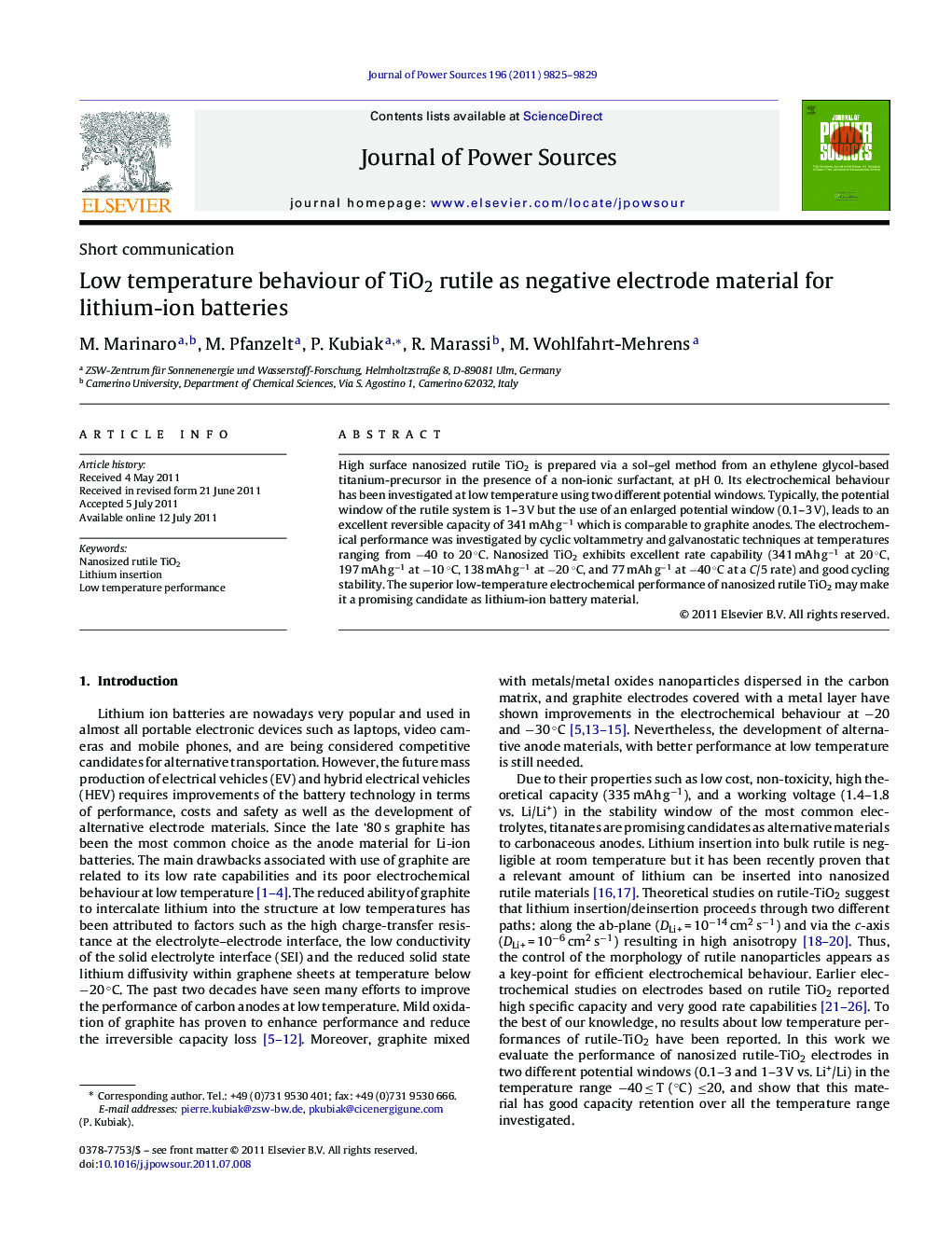| Article ID | Journal | Published Year | Pages | File Type |
|---|---|---|---|---|
| 1284746 | Journal of Power Sources | 2011 | 5 Pages |
High surface nanosized rutile TiO2 is prepared via a sol–gel method from an ethylene glycol-based titanium-precursor in the presence of a non-ionic surfactant, at pH 0. Its electrochemical behaviour has been investigated at low temperature using two different potential windows. Typically, the potential window of the rutile system is 1–3 V but the use of an enlarged potential window (0.1–3 V), leads to an excellent reversible capacity of 341 mAh g−1 which is comparable to graphite anodes. The electrochemical performance was investigated by cyclic voltammetry and galvanostatic techniques at temperatures ranging from −40 to 20 °C. Nanosized TiO2 exhibits excellent rate capability (341 mAh g−1 at 20 °C, 197 mAh g−1 at −10 °C, 138 mAh g−1 at −20 °C, and 77 mAh g−1 at −40 °C at a C/5 rate) and good cycling stability. The superior low-temperature electrochemical performance of nanosized rutile TiO2 may make it a promising candidate as lithium-ion battery material.
► Rutile TiO2 as negative electrode material for Li-ion batteries. ► TiO2 material exhibits excellent electrochemical performance at low temperature. ► Broad potential window allows better performance at low temperature.
